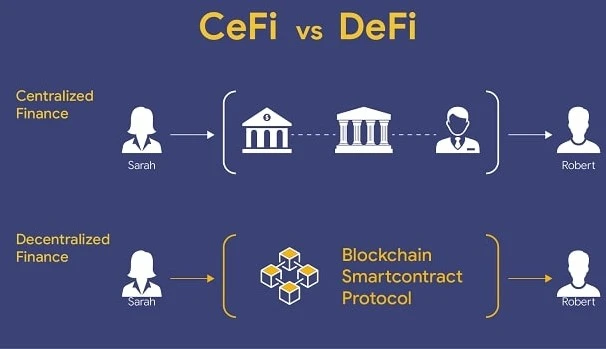In the decentralized finance (DeFi) space, insurance provides a way to protect assets from risks like smart contract failures or protocol hacks. For someone new to this area, understanding the process of acquiring coverage involves several practical steps, from setting up tools to selecting specific policies.
Common risks covered in DeFi insurance platforms include smart contract vulnerabilities, where code errors lead to fund losses, or economic failures like impermanent loss in automated market makers. Premiums are paid in cryptocurrencies, and claims are processed via on-chain governance or automated mechanisms. Platforms like Nexus Mutual and Unslashed Finance exemplify this model, allowing users to buy protection for specific protocols.
Note: DeFi insurance does not guarantee full recovery in all cases, as coverage depends on the policy terms and the platform’s claim assessment process.
Here is the step-by-step guide to purchase insurance in DeFi
Get a compatible crypto wallet
To start, ensure you have the necessary tools. Begin by acquiring a compatible cryptocurrency wallet. Options include MetaMask for Ethereum-based networks or Phantom for Solana ecosystems. Download the wallet from its official site, create an account, and secure it with a strong password and seed phrase backup.
Fund your wallet with required crypto
Next, fund the wallet with the required cryptocurrency. Most DeFi insurance platforms use ETH or stablecoins like USDC. Purchase these through centralized exchanges such as Coinbase or Binance, then transfer them to your wallet. Account for gas fees, which are network transaction costs, typically ranging from a few dollars to higher during peak times.
Connect to a supported blockchain network
For Ethereum-focused insurance, switch your wallet to the mainnet. If the platform operates on layer-2 solutions like Polygon for lower fees, adjust accordingly in the wallet settings.
Selecting a DeFi Insurance platform
Research available providers to match your needs. Nexus Mutual offers coverage for over 100 protocols, requiring users to stake NXM tokens for membership. Bridge Mutual provides parametric insurance, where payouts trigger automatically based on predefined conditions.
To evaluate platforms, check their total value locked (TVL) on sites like DefiLlama, which aggregates data on protocol security and usage. Review audit reports from firms like PeckShield or Certik, available on the platform’s documentation page.
Consider factors such as premium rates, which might be 2-5% annually of the covered amount, and claim history to gauge reliability. Avoid platforms with recent security incidents or low liquidity in their insurance pools, as these could delay payouts.
Access the Platform’s Interface
Navigate to the official website of your chosen provider, such as nexusmutual.io. Use a secure browser and verify the URL to prevent phishing attacks.
Connect Your Wallet
Click the “Connect Wallet” button on the dashboard. Approve the connection prompt in your wallet app. This links your address without transferring funds immediately.
Complete Any Membership Requirements
For mutual-based platforms, you may need to undergo a know-your-customer (KYC) process or stake tokens. This involves submitting identity verification and purchasing tokens via an integrated exchange.
Choose the Coverage Type
Browse available policies. Select the protocol you want to insure, like Aave for lending risks. Specify the amount to cover, such as $10,000 worth of deposited assets, and the duration, often ranging from 30 days to a year.
Review Policy Details
Examine the premium quote, calculated based on risk assessments. For instance, implementing a high-yield farming protocol might be more expensive due to increased exploitation risks. Check exclusions, such as non-covered events like market volatility.
Approve and Pay the Premium
In your wallet, approve the token spend for the premium amount. Confirm the transaction, paying the gas fee. The platform issues a non-fungible token (NFT) or receipt as proof of coverage.
Keep Records of Your Coverage
After purchase:
Save the transaction hash and policy details.
Take note of the claim submission process and deadlines.
Monitor your coverage status through the platform’s dashboard.
Monitor Your Policy
Use the platform’s dashboard to track expiration dates and renewal options. Set reminders for policy renewals to maintain continuous protection.
Handling Claims in DeFi Insurance
If an insured event occurs, initiate a claim through the platform’s interface. Submit evidence, such as transaction hashes proving the loss. Governance voters or oracles assess the claim, with approval leading to payout in the covered cryptocurrency.
Processing times vary; some platforms resolve claims in days, while others take weeks. Historical data shows payout rates around 70-80% for valid claims on established providers.
Risks and Considerations When Buying DeFi Insurance
While useful, DeFi insurance carries its own challenges. Smart contract risks apply to insurance protocols themselves, potentially leading to coverage failures. Regulatory uncertainties in different jurisdictions could affect accessibility.
Diversify across multiple providers to spread risk. Factor in opportunity costs, as premiums reduce overall yields. Stay informed via community forums like Discord channels or subreddits dedicated to DeFi security.
Above all, buying insurance in DeFi involves careful preparation and selection to safeguard your investments. By following these steps, you can navigate the process effectively while remaining aware of the inherent limitations.


